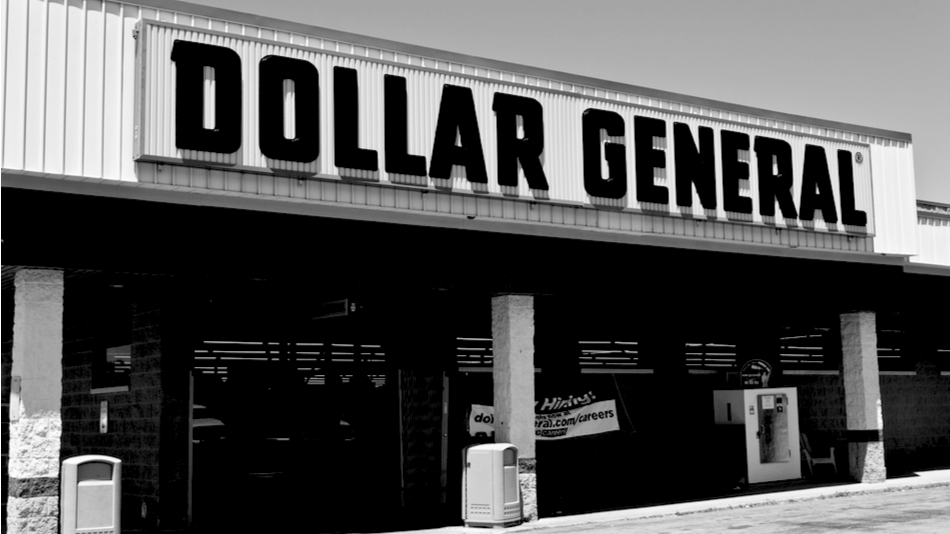When it comes to the rise of dollar stores, the numbers are somewhat staggering. Three-fourths of Americans live within five minutes of a Dollar General store, currently the largest US retail chain by store count. And while retailers around the country are closing at a record pace, Dollar General is adding almost 2,000 stores over a two-year period. In 2018, Dollar General generated more retail sales than Macy’s.
This is not just the story of one company doing particularly well. Discount stores dominated the list of retailers with new store openings in 2019. In addition to Dollar General, they were: Dollar Tree, Family Dollar, Aldi and Five Below. Dollar Tree owns Family Dollar, and when combined with Dollar General, the three brands have more retail locations than Walmart and Starbucks combined.
It has long been believed that these types of discount stores thrive when the economy tanks. But the roaring economy—with record-breaking stock market highs—has turned that adage on its head. The stronger economy is doing nothing to stop discount stores. Between 2011—the end of the Great Recession—and 2018, there were 10,000 new dollar stores added—about a 50 percent increase in the total number.
Why are these discount stores expanding at such a rapid rate? These are the factors driving their growth.
An Oasis or Mirage?
According to research by Tulane University, some 2.3 million Americans live more than mile away from a grocery store and do not have a car. In these so-called “food deserts” (so coined by social scientists), access to groceries a challenge. Those living in food deserts have to invest more time and money in getting food.
The problem has increased in recent years, as grocery undergoes its own changes. Four grocery chains control about 44 percent of the market. Small local grocers are practically a thing of the past.
The wide availability of discount stores, then, might seem to be an easy solution, particularly as large grocery chains—often accompanied by huge footprints—have pulled out of some of these areas and local grocers have gone under.
But that’s a complex issue, with the questions of which came first. As discount stores move in, it becomes even harder for small grocers to compete—and less attractive for chain groceries to invest.
While it can be argued that discount stores solve one challenge, i.e. access to food in general, critics note that most of the food these discount stores sell is shelf stable and processed. Dollar General has responded by implementing DG Fresh, a program designed to increase the refrigerated and fresh products at its stores. DG Fresh is expected to be available in all stores within four years as Dollar General remakes its supply chain and adds more cold storage facilities.
Smaller Quantities = Lower Price Tags
A sizable percentage of the discount store customer base earns far less than the average American. About 57 percent of Dollar General’s customers live in households earning less than $50,000 and about 30 percent in those earning than $25,000.
Dollar stores thrive by keeping prices low. In some cases, that means working with retailers on smaller packaging, offering toilet paper, for instance, in single rolls. While the cost-volume ratio might be higher at a discounter than a warehouse stores, for customers focused on stretching that week’s paycheck, price wins.
The size of the stores matter, too. Dollar General, in particular, has a deep connection with its customers and frequently surveys them on how they’re doing. A typical Dollar General store is 7,500 square feet, stocked with fewer than 10,000 items and requiring two or three employees on hand at any given time. Combined, all of these factors give customers what they want.
Expansion in Clusters
Unlike other retailers’ strategies, dollar stores tend to expand in clusters. It’s yet another way to make its products accessible to people without their own transportation—and to keep its overhead low. Clustering stores allows a retailer to tailor specifically to local populations. A retailer that focuses on drawing from several hundred miles might have additional costs when trying to do reflect local tastes. But two stores a mile apart might share many similarities, allowing for economies of scale in assortment. Then, there are added savings when it comes to local advertising, operations audits, and a limited distribution center presence.
But it is this very strategy that has drawn attention as some communities have lined up to prevent this kind of density. Recently, cities like Fort Worth, Texas, and Birmingham, Alabama, passed laws restricting the number of dollars stores. In Fort Worth, a new store can be no closer than two miles to another discounter. Also, fresh produce and dairy must take up at least 10 percent of the store’s footprint.
In Tulsa, Oklahoma, discount stores can’t locate within one mile of another—unless they offer 500 square feet of fruits, vegetables and fresh meats. The push for healthier options could succeed in better providing for those in food deserts—or it might raise the costs for discount stores.
Last Word on Dollar Stores
The rise of discount stores has been an under-the-radar phenomenon over the last decade. Now that this growth is starting to get attention from regulators and local politicians, it remains to be seen what the long-term impact might be. However, one thing is clear: Discount stores have hit upon a winning strategy.
Retail store managers use CB4’s app to ensure their stores are meeting shoppers’ needs each and every time they visit. Check out this short video to see how it works.




